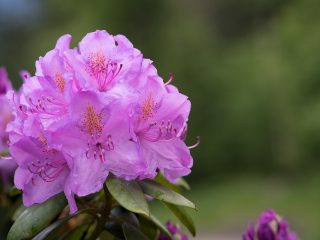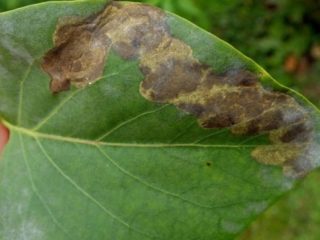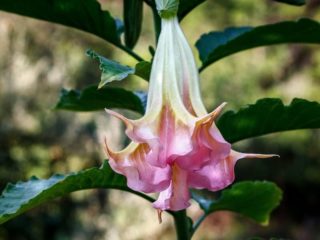Content
Choisia is an interesting evergreen shrub that can be grown both in open ground and in pots. The plant is characterized by abundant long-term flowering and excellent decorative effect after its completion. It is not difficult to care for, so even a person with no experience can cope with its cultivation.
Photo and description of Choisie
Choisia is a genus of shrubs belonging to the Rutaceae family. It grows naturally in southern North America. The plant owes its name to the Swiss botanist D. Choisy.
The Hoisia flower is a round-shaped plant, reaching a height of 1-3 m. It is formed from flexible shoots that grow in a chaotic manner. The leaf blade is leathery and quite large. It contains a lot of quinoline alkaloids.

When rubbed, Hoisia leaves emit a pleasant scent.
Lush inflorescences form at the tips of the shoots. They consist of many small (up to 5 cm in diameter) white flowers. They look like an orange plant. The flowering period occurs in late spring or early summer. A second wave occurs in the fall. When blooming, the Choisia shrub emits a pleasant aroma.
After flowering ends, the fruit begins to form.It is a leathery box containing 2-6 compartments. Seeds ripen in them.
Types of Choisie
There are two main types of Choisie. They are unpretentious and highly decorative.
Triple choisya (Ternata choisya)
This species is native to Mexico. The bush reaches a height of 3 m. It is abundantly covered with white, star-shaped, small flowers. They exude a pleasant aroma of citrus plants. The buds begin to bloom in the spring, the decorative period lasts until mid-summer. The second wave of flowering occurs in autumn.
There are two varieties of Choisia trifoliata:
- Sundance (Lich/Sundance). A bush reaching a height of 10-2 m, with golden foliage. The plant begins to bloom in late spring or early summer. The second wave rarely occurs.
Sundance has fewer flowers than the main variety
- Moonshine. This variety is distinguished by larger flowers and leaf blades than the main variety. The height of the bush is about 1-2 m. The first flowers bloom in late spring.
To plant Mushain, you should choose slightly shaded areas
Bush Choisya (Dumosa Choisya)
It is a spherical shrub reaching a height of 1 m. The foliage has a rich green tint. The surface is rough due to small protruding glands. Flowers and leaf blades exude a pleasant citrus aroma. It is felt especially strongly when rubbed. The bush is strewn with small (about 1 cm) white flowers, which form clusters located in the upper part of the shoots.

In its natural habitat, the bush species prefers rocky or sandy terrain
Features of cultivation
Choisia received the name Mexican orange for its resemblance to this plant. This is an unpretentious flower to grow. However, for its best growth, care recommendations must be followed.
Choisia is characterized by poor resistance to frost. In Russian conditions, it does not survive winter well in open ground. During the cold period it should be covered. The plant is suitable for use as an indoor flower.
Choisia feels best in well-lit areas. But slightly shaded places are also suitable. In open ground, it should be planted in areas protected from drafts. When grown indoors, it needs to be ventilated periodically.
The plant needs regular watering. However, if the soil is overly wet, the root system rots, which can lead to the death of Choisia. In dry weather, in addition to watering, you can spray the bush with a spray bottle. During cold periods, it is necessary to reduce the amount of watering. It is worth making sure that the soil does not dry out.
For good growth, it is recommended to fertilize periodically. For this, it is best to use complex mineral supplements. They need to be applied several times from late spring to early autumn.
Choisia is actively growing. Therefore, to give it a more attractive appearance, it is recommended to carry out formative pruning. After winter, some shoots may freeze. In this case, sanitary pruning is required.
Diseases and pests
If Choisia is grown in open ground, it may be subject to attacks by pests.Most often it is affected by snails. Their attacks are evidenced by holes appearing on the leaves of the plant.
The most dangerous disease is root rot. It occurs due to excessive waterlogging. Damaged parts of the plant need to be removed and replanted in a new location.
Reproduction methods
The main method for propagating Choisia is cuttings. In the spring you need to cut shoots about 10 cm long. After this, place the shoots in Kornevin. Then plant them in open ground or containers. When growing outdoors, it is recommended to place them in a greenhouse. At first, the cuttings need to be covered overnight. Particular attention should be paid to preparing for winter.

Next spring, the strengthened shoots can be transplanted to a permanent place
Choisia trifoliate produces abundant root shoots. Therefore, when growing it, you can propagate the plant by dividing the bush. This needs to be done in the spring. For work you should use a sharp tool.
Conclusion
Choisia is an excellent choice for lovers of unusual and easy-to-care plants. It has a wide range of applications: it can be used for single and group plantings, decorate balconies and verandas, and kept as an indoor flower. When grown in cold regions, wintering difficulties may arise.










